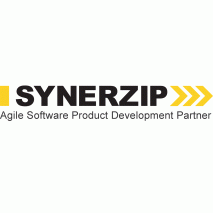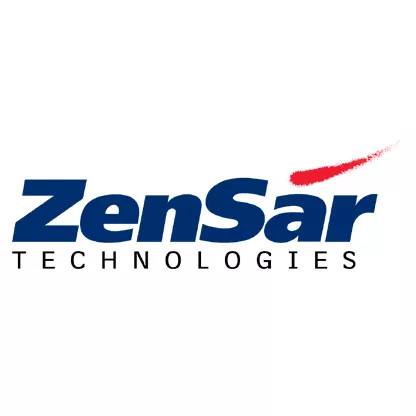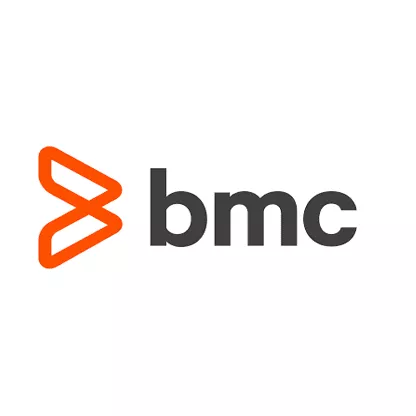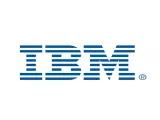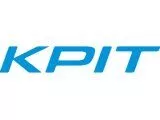Master in Data Science Course in Pune
What is data science?
Data Science is a branch of science that uses advanced algorithms and scientific computations to extract meaningful information obtained from a structured and unstructured form of data. An example of structured data can be the data that is obtained from an Excel file or SQL database. Also, an example of unstructured data can be images, videos, and so on. The source of this data can be any social media channel, surveys, or company data, and so on. A Data Scientist working on this data will analyze the given data from different perspectives and extract the information needed to improve any business’s profit. The data is interpreted in a visual format so that it can be understood by non-technical people like people from the Sales department, HR department, and so on.
40+ hrs course duration
15+ hrs assignment duration
100% receive an Offer Letter

master in data science course in pune
The demand for Data Science expert is high as compared to the actual Data Science expert availability. Being a Data Science professional, your prestige also increases, as you get an important position in the companies and for sure you will get jobs in big companies. With Data Science Course in Pune you can build unique products in various field like health care and also save many lives.
Duration
6 months
Modules Covered
Data Science, Python, Machine Learning
Assignments
Recordings
1 Year
Support
24X7
Study Material
Installation, setups, and eBooks
Placement Support
100% receive an Offer Letter
Calls
unlimited till 1 year
EMI Option
Available
Enquire Now
Key features
- Job-oriented curriculum
- Certified experienced Trainers
- Lifetime access to study material
- LIVE interactive online class
- Flexible batch options
- Reasonable fees
- Software Installation Assistance
- Hand-on training
- Daily Assignments
- Doubt Solving sessions
- Industry-based projects
- Missed class covered
- Lifetime access to class recordings
- Curriculum regularly updated
- Placement assistance
- Soft skill workshop
- Career counseling
- Resume and LinkedIn profile preparation
- Mock Interviews
- Constant motivation and Guidance from instructors
Nothing stops you from Learning
Nothing stops you from learning, we provide EMI options for our trainings.
Apply Now
Data Science Syllabus
1. Fundamentals of Data Science and Mathematical statistics
- Introduction to Data Science
- Need of Data Science
- Big-Data and Data Science
- Data Science and machine learning
- Data Science Life Cycle
- Data Science Platform
- Data Science Use Cases
- Skill Required for Data Science
2. Mathematics For Data Science
- Linear Algebra
- Vectors
- Matrices
3. Introduction to Statistics
- Descriptive vs. Inferential Statistics
- Types of data
- Measures of central tendency and dispersion
- Hypothesis & inferences
- Hypothesis Testing
- Confidence Interval
- Central Limit Theorem
4. Probability and Probability Distributions
- Probability Theory
- Conditional Probability
- Data Distribution
- Distribution Functions
- Normal Distribution
- Binomial Distribution
1. Using a Spreadsheet
- What is Excel?
- Why Use Excel?
- Excel Overview
- Excel Ranges, Selection of Ranges
- Excel Fill, Fill Copies, Fill Sequences, Sequence of Dates
- Excel adds, move, and delete cells
- Excel Formulas
- Relative and Absolute References
2. Functions
- SUM
- AVERAGE
- COUNT
- MAX & MIN
- RANDBETWEEN
- TRIM
- LEN
- CONCATENATE
- TODAY & NOW
3. Advanced Functions
- Excel IF Function
- Excel If Function with Calculations
- How to use COUNT, COUNTIF, and
- COUNTIFS Function?
4. Data Visualization
- Excel Data Analysis – Data Visualization
- Visualizing Data with Charts
- Chart Elements and Chart Styles
- Data Labels
- Quick Layout
1. An Introduction to Python
- Why Python, its Unique Feature and where to use it?
- Python environment Setup/shell
- Installing Anaconda
- Understanding the Jupyter notebook
- Python Identifiers, Keywords
- Discussion about installed module s and packages
2. Conditional Statement ,Loops and File Handling
- Python Data Types and Variable
- Condition and Loops in Python
- Decorators
- Python Modules & Packages
- Python Files and Directories manipulations
- Use various files and directory functions for OS operations
3. Python Core Objects and Functions
- Built in modules (Library Functions)
- Numeric and Math’s Module
- String/List/Dictionaries/Tuple
- Complex Data structures in Python
- Python built in function
- Python user defined functions
4. Introduction to NumPy
- Array Operations
- Arrays Functions
- Array Mathematics
- Mean
- Standard Deviation
- Max
- Min
- Array Manipulation
- Reshaping
- Resizing
- Array I/O
- Matrix creation
- Data generation
- Random function
- Normalized Data Generation
- Indexing and Slicing
- Transpose
- Importing Files with Numpy
5. Data Manipulation with Pandas
- Data Frames
- Series
- I/O
- Creating Pandas DataFrame
- Selection in DFs
- Data Describe
- Data info
- Retrieving in DFs
- Applying Functions
- Reshaping the DFs – Pivot
- Combining DFs-Merge-Join
- Data Alignment
6. SciPy
- Hypothesis Testing using Scipy
- Shapiro Test
- Spearman Test
- T-Test of Independents
- Chi-Square Test
7. Visualization with Seaborn
- Seaborn Installation
- Introduction to Seaborn
- Basics of Plotting
- Plots Generation
- Visualizing the Distribution of a Dataset
- Selection color palettes
8. Visualization with Matplotlib
- Matplotlib Installation
- Matplotlib Basic Plots & it’ s Containers
- Matplotlib components and properties
- Scatter plots
- 2D Plots
- Histograms
- Bar Graphs
- Pie Charts
- Box Plots
- Customization
- Store Plots
9. Sci-Kit Learn
- Basics
- Data Loading
- Train/Test Data generation
- Preprocessing
- Generate Model
- Evaluate Models
10. Descriptive Statistics
- Data understanding
- Observations, variables, and data matrices
- Types of variables
- Measures of Central Tendency
- Arithmetic Mean / Average
- Merits & Demerits of Arithmetic Mean and Mode
- Merits & Demerits of Mode and Median
- Merits & Demerits of Median Variance
11. Probability Basics
- Notation and Terminology
- Unions and Intersections
- Conditional Probability and Independence
12. Probability Distributions
- Random Variable
- Probability Distributions
- Probability Mass Function
- Parameters vs. Statistics
- Binomial Distribution
- Poisson Distribution
- Normal Distribution
- Standard Normal Distribution
- Central Limit Theorem
- Cumulative Distribution function
13. Tests of Hypothesis
- Large Sample Test
- Small Sample Test
- One Sample: Testing Population Mean
- Hypothesis in One Sample z-test
- Two Sample: Testing Population Mean
- One Sample t-test – Two Sample t-test
- Paired t-test
- Hypothesis in Paired Samples t-test
- Chi-Square test
14. Data Analysis
- Case study- Netflix
- Deep analysis on Netflix data
1. Exploratory Data Analysis
- Data Exploration
- Missing Value handling
- Outliers Handling
- Feature Engineering
- Train-Test Split
- Standard Scaler
- Min-Max Scaler
- Data Preprocessing
- Resampling
- Up-Sampling
- Down-Sampling
2. Feature Selection
- Importance of Feature Selection in Machine Learning
- Filter Methods
- Feature Extraction
- Feature Extraction using PCA
3. Machine Learning: Supervised Algorithms
- Introduction to Machine Learning
- Linear Regression
- Multiple Linear Regression
- Logistic Regression
- Binary Classification
- Multiclass classification
- Naïve Bays Algorithm
- K-Nearest Neighbor Algorithm
- Decision Tress
- Classification
- Regression
- Support Vector Machines
- Random Forest
- Model Evaluation and performance
- Accuracy
- Precision
- Recall
- F1 Score
- Confusion Matrix
- Classification Report
- K-Fold Cross Validation
- ROC, AUC etc…
- Hyper parameter tuning
4. Machine Learning: Unsupervised Learning Algorithms
- Similarity Measures
- Cluster Analysis and Similarity Measures
- K-Means Clustering
- Elbow Method
- Hierarchical Clustering
- Agglomerative Clustering
- K-Nearest Neighbors
5. Ensemble algorithms
- Bagging
- Random Forest
- Boosting
- Adaboost
- Voting
- Stacking
- Principal Components Analysis
- Association Rules Mining & Market Basket Analysis
6. Recommendation Systems
- Collaborative filtering model
- Content-based filtering model.
- Hybrid collaborative system
1. Artificial Intelligence
- An Introduction to Artificial Intelligence
- History of Artificial Intelligence
- Future and Market Trends in AI
- Intelligent Agents – Perceive-Reason-Act Loop
- Search: Symbolic Search and Adversarial Search (Game Playing)
- Understanding Sensor Processing
- Constraint-based Reasoning
2. Deep networks and structured knowledge
- Studying Neural Elements
- Neural Networks and Perceptions
- Understanding Feedforward Networks
- Boltzmann Machines and Autoencoders
- Exploring Backpropagation
- Working of Neural Networks
- Exploring Gradient Descent
- Stochastic Gradient Descent
3. Natural Language Processing
- Natural Language Processing
- NLP in Python
- Tokenization
- Part of Speech Tagging (POS Tagging)
- Named Entity Recognition
- Semantic Analysis
- Sentiment Analysis
4. Artificial Neural Network
- Understanding Artificial Neural Network
- The Activation Function
- Building an ANN
- Building Problem Description
- Evaluation the ANN
- Improving the ANN
- Tuning the ANN.
5. Image Processing / Machine Vision
- Image basics
- Image generation
- Loading and saving images
- Bluring
- Masking
- Image Augmentation
- Working with Hue, Saturation & Light of image
- Working with RGB colors of image
- Changing colors of image
- Rotation
- Flipping
- Resizing
- Cropping
- Edge Detection
- Addition
- Multiplication
6. Conventional Neural Networks
- CNN Intuition
- Convolution Operation
- Kernel Operation
- Filtering operation
- Padding on image
- Pooling Layer
- Max Pooling
- Average Pooling
- ReLU Layer
- Flatten Layer
- Fully Connected Dense Layer
- Softmax and Cross-Entropy
- Building a CNN
- Evaluating the CNN
- Improving the CNN
- Tuning the CNN
7. Recurrent Neural Network
- Recurrent Neural Network
- RNN Intuition
- The Vanishing Gradient Problem
- LSTMs and LSTM Variations
- Practical Intuition
- Building an RNN
- Evaluating the RNN
- Improving the RNN
- Tuning the RNN
8. Time Series Data
- Introduction to Time series data
- Data cleaning in time series
- Pre-Processing Time-series Data
- Prediction in Time Series using LSTM
- Prediction in Time Series using ARIMA
1. Introduction to Git & Distributed Version Control
2. Life Cycle
3.Create clone & commit Operations
5. Push & Update Operations
6. Stash, Move, Rename & Delete Operations.
1. Machine Learning Features & Services
- Using python in Cloud
- Understanding Google Colab
- Understanding Jupyter Lab
- How to access Machine Learning Services
- Lab on accessing Machine learning services
- Uploading Data
- Preparation of Data
- Applying Machine Learning Model
1. Introduction to Data Visualization
- Architecture of Power BI
- Product Components
- Working with Metadata and Data Blending
- Data Connectors
- Data Model
- File Types
- Data Source Filters
2. Scatter Plot
- Funnel Chart
- Waterfall Chart
- Working with Filters
- Organizing Data and Visual Analytics
- Working with Maps
- Working with Calculations and Expressions
- Working with Parameters
- Charts and Graphs
- Dashboards and Reports
- Machine Learning end to end Project blueprint
- Case study on real data after each model.
- Regression predictive modeling – E-commerce
- Classification predictive modeling – Binary Classification
- Case study on Binary Classification – Bank Marketing
- Case study on Sales Forecasting and market analysis
- Widespread coverage for each Topic
- Various Approaches to Solve Data Science Problem
- Pros and Cons of Various Algorithms and approaches
- Amazon-Recommender
- Image Classification Sentiment Analysis
Project Domain: FINANCE
- The insurance company wants to decide on the premium using various parameters of the client.
- It’ s an important problem to keep the clients and attract new ones.
By completing this Project you will learn:
- How to collect data?, how to justify the right features? , Which ML / DL model is best in this situation? How much data is enough?
- How to have CI/CD in the project?
- How to do Deployment of Project to cloud?
Project Domain: Image Processing in Health care
- A hospital wants to automate the Detection of pneumonia in X-rays using image processing.
By completing this Project you will learn:
- How to handle image data? How to preprocess and augment image data?
- How to choose the right model for the image process?
- How to apply transfer learning in image processing?
- How to do incremental learning & CI/CD in the project?
- How to do Deployment of Project to cloud?
Natural Language Processing
- One of the companies wants to automate applicant’ s level in English communication.
- Create a ML/DL model for this task.
By completing this Project you will learn:
- How do convert text to the right representation?
- How to preprocess text data? How to select the right ML/DL model for text data?
- How to do transfer learning in Text Analytics?
- How to do CI/CD in a text analytics project? How to do Deployment of Project to cloud?
Mechanical
- A mechanical company wants to perform predictive maintenance of engine parts.
- This enables the company to efficiently change parts before the machine fails.
By completing this Project you will learn:
- How to handle time-series data?
- How to preprocess time series data?
- How to create ML/DL model for Time-series Data?
- How to do CI/CD in a text analytics project?
- How to do Deployment of Project to cloud?
Sales / Demand Forecasting
- Predict the sales/demand of a product of a company.
- Sales / Demand forecasting of the product will help the company efficiently manage the resources.
- Create a ML/DL model for this problem.
By completing this Project you will learn:
- How to handle time-series data?
- How to preprocess time series data?
- How to create ML/DL model for Time-series Data?
- How to do CI/CD in a text analytics project? How to do Deployment of Project to cloud?
FAQ
Frequently Ask Questions.
Frequently asked questions for DevOps Foundation Certification
Yes, you will be awarded a Certificate of Completion after you finish the course along with all the assignments and projects.
This Data Science Online Learning institute will provide you with 100% placement assistance. We will also arrange a special session to improve your soft skills as fluent communication paves the way to success. We will also help you prepare a dynamic resume and LinkedIn profile that help you in the initial screening for job opportunities. We will also conduct a few rounds of Mock Interviews to help you face any job interview.
Data Science Training Online offers the best Data Science online course in India. Despite this fact, we arrange demo sessions regularly, usually on weekends. You can call us on 7410073340 to book a demo class today.
We will provide a LIVE interactive online class where the students can understand the concepts with the trainers. They can also solve their doubts during the session. Also, peer learning happens in every class. Also, the instructor ensures that all concepts are clear during the class. They don’t process ahead until then.
- Prediction of fare in Uber App
- Prediction of Product Rating for Amazon
- Forecasting of demand for an e-commerce store
Many more
The duration of the entire course is of 40-50 hours of an online class. You will additionally need 15-20 hours to complete your projects and assignments. The different batches happen on weekdays and weekends. You have the liberty to choose an appropriate batch that matches suits you.
The study material is designed by a team of experts having 5-10 years of professional experience as a Data Scientist or Data Engineers. The study material is in line with the demands in the market. It considers theoretical and practical implementations of every concept to give you a perfect blend of both. Also, we regularly update the curriculum to cover the latest technology updates.
If you miss any session, you need not have to worry. You can attend the same class along with the next upcoming batch. Also, you may watch the video recording of the LIVE class.
- Job-oriented curriculum
- Certified experienced Trainers
- Lifetime access to study material
- LIVE interactive online class
- Flexible batch options
- Reasonable fees
- Software Installation Assistance
- Hand-on training
- Daily Assignments
- Doubt Solving sessions
- Industry-based projects
- Missed class covered
- Lifetime access to class recordings
- Curriculum regularly updated
- 100% placement assistance
- Soft skill workshop
- Career counseling
- Resume and LinkedIn profile preparation
- Mock Interviews
- Constant motivation and Guidance from instructors
Data Science Course in Pune is the best online training institute for Data Science. Enrolling in Data Science online classes will pave your way towards a bright future. It will also open new career paths for you.
- Data Scientist
A Data Scientist’s responsibility is to find, clean, and organize the data collected from the different mediums of information. It needs immense technical knowledge. The average annual salary is $140K.
- Machine Learning Engineer
Their responsibility is to create funnels for data and delivering solutions accordingly. They are responsible for testing and monitoring the performance and functionality aspects of the systems. The average annual salary is $115K.
- Machine Learning Scientist/Research Scientist
Their responsibility is to find new approaches and algorithms that can be used for Supervised or Unsupervised learning. The average annual salary is $114K.
- Application Architect
Their responsibility is to study how different applications behave. They also understand how these systems interact with each other and with other users. The average annual salary is $114K.
- Enterprise Architect
Their responsibility is to select appropriate technology that will help in meeting the objectives of the company. For this role, it is necessary to have an understanding of companies’ goals and different technologies. The average annual salary is $110K.
- Data Architect
Their responsibility is to design data solutions that will meet the performance requirement of the company. The average annual salary is $108K.
- Infrastructure Architect
Their responsibility is to ensure that the systems give optimum performance. Also, they can easily support newer technologies. The average annual salary is $107K.
- Data Engineer
Their responsibility is to perform the processing of batches of real-time data. They also help in maintaining the data pipelines. The average annual salary is $104K.
- BI Developer
Their responsibility is to design solutions for businesses based on data collected so that businesses can make sound decisions to increase the business’s profit. The average annual salary is $82K.
- Statistician
Their responsibility is to collect and interpret this data to understand the trends followed in the market. The average annual salary is $77K.
- Data Analyst
Their responsibility is to manipulate and transform the more massive sets of data for company use. The average annual salary is $62K.
All the Data Science online classes are conducted LIVE, i.e., and the instructor directly addresses you like it would have been done in a regular classroom. The only difference is you are attending the same from the comfort of your home. You can always ask your doubts to the trainer during the class itself. This will help your peer also understand your doubts. Many times such doubts solving helps the other student to understand the different possible perspectives of a concept.
Trusted by more than 50+ Businesses and MNCs off All Size
